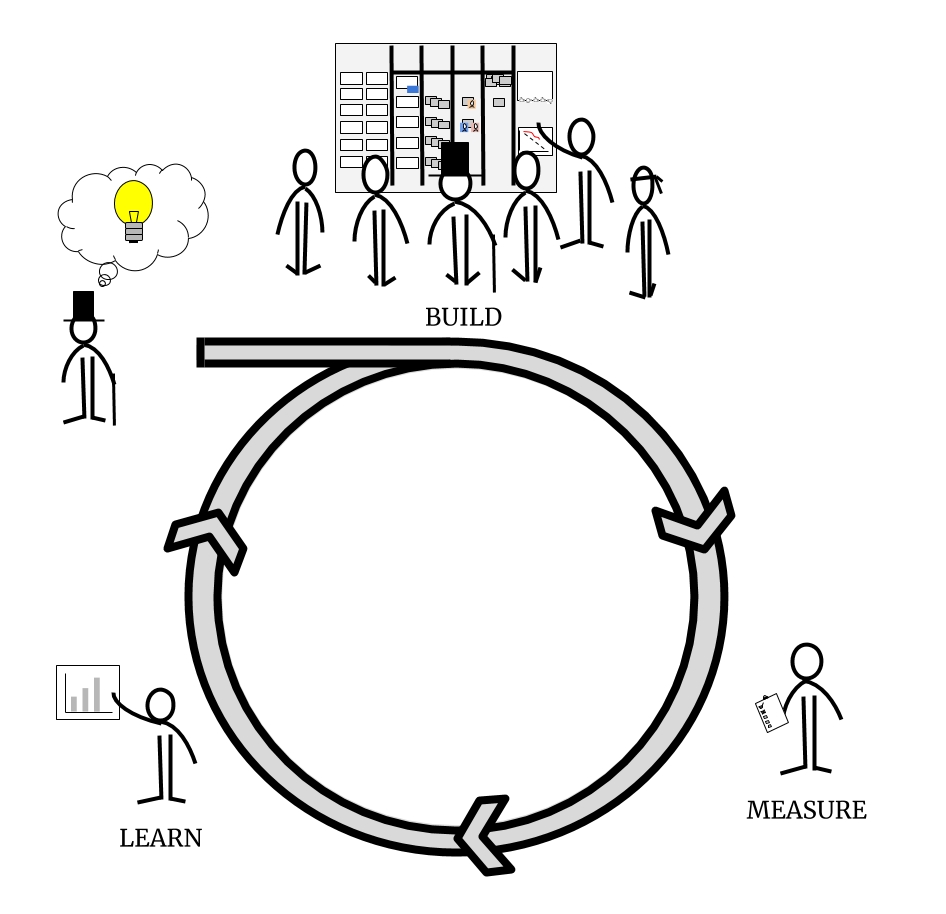We mentioned just now that Lean Startup is a hypothesis-driven approach; let's pull this apart a little for more understanding. The hypothesis-driven approach involves setting up an experiment to test out if a theory we have has legs or not. It could be as simple as writing a statement with the following template:
- We believe that by creating this experience
- For these people
- We will get this result
- And we'll know this is true when we see this happening
A hypothesis has four parts:
- The belief: This is something that we think we know based on either evidence from our data, the needs of our customer, or a core competency (something we know how to do well, or are particularly good at)
- The target market: Our audience for this particular hypothesis
- The outcome: The outcome we believe we will get
- The measurement: The metrics that will tell us if our outcome is taking us in the right direction, towards our business objective
Using the hypothesis template, we then build out enough of a product feature set so that we can test out our theory. This is usually done incrementally over a number of iterations. This first cut of our product is known as the Minimum Viable Product (MVP) and is the smallest possible feature set that makes sense for us to validate with real-world users.
To do this, we take a feature-driven approach, where we prioritize certain features over others and get them to a viable offering state as soon as possible.
Prioritization is carried out using a release planning strategy that targets our primary, secondary, and tertiary user groups. Our primary user groups are the key users of our software product, the people who will tell us if our business idea is worth pursuing. So we'll build software which targets their needs first. This allows us to focus our efforts and target the most important aspects of our product.
We don't have to fully develop a feature to make it viable; we can target certain segments of our market first and test it out before we further enhance it. The aim is to create "light" features which, although limited in their functionality, will allow us to validate our ideas as quickly as possible.
Our validated learning comes into play as we start to measure the success of the experiment to determine if we're on the right track. We use actionable metrics; these are metrics that we've set up to help inform us of what business actions we should take when certain measurements are recorded.
To illustrate, if we're testing a feature that drives new membership sign-ups, we need to measure exactly how many new members signed up as a result of using our feature. If the non-member to new-member conversion rate is above a certain percentage threshold of people who used our feature, then we can most likely say it's a success, and we can carry on enhancing it further.
Another example is when building a checkout process for our online shop; we are validating two key aspects of our product. Firstly, do our customers want to buy what we're selling? Secondly, do they trust us and our checkout process enough that they will complete a purchase?
We can test this out in a number of ways without building out the full product feature, providing we capture people's actions and their reactions to measure our success.
In the Lean Startup approach, this constant testing of our assumptions is known as the BUILD, MEASURE, LEARN cycle as shown in the following diagram:

A Lean Startup is a metrics-driven approach, so before we start building features, we need to think about how we are going to measure their success.
The trick is to use the MVP to learn what does and doesn't work. The measurements we take from the learning phase, and the insights that we generate from them, we then feed into the next increment.
If the measurements indicate we're moving in the right direction and adding value, we continue to build on our current ideas.
If the measurements indicate we're not moving in the right direction, then we assess what to do. If we determine that the experiment is no longer working, we have the option to pivot in a different direction and try out new ideas.
The aim is to build up the increments until we have a Minimum Marketable Product (MMP).
